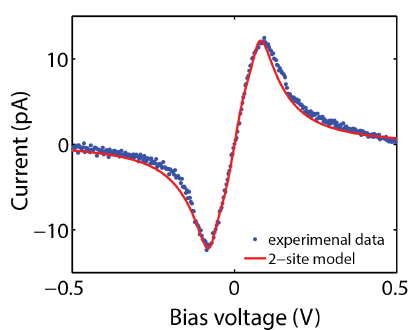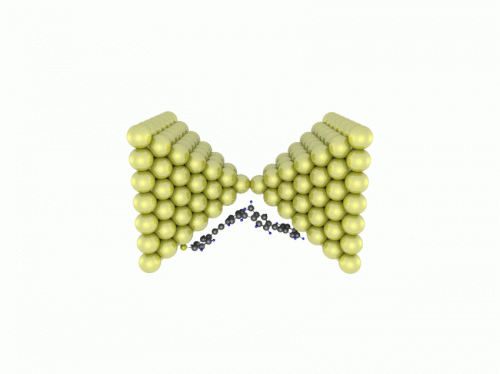A single molecule device for mobile phones

Researchers from the Delft University of Technology, Groningen University and the FOM Foundation have designed a single molecule which can act as a useful building block in nanometer-size circuits. They found that the molecule functions as a resonant tunneling device, an essential component in mobile phones and WiFi. In conventional semiconductor technology, these devices have a complicated design consisting of several layers of different materials. This is the first time that such a device has been realized on the smallest imaginable scale, thus providing an interesting option within the continuing down-scaling of electronic components by the conventional industry. The results are published online this week in Nature Nanotechnology.
Molecular electronics
Molecules have a typical size of a few nanometers, making them the ultimate limit for down-sizing present-day electronic components, such as diodes, transistors, and so called resonant tunneling devices. Radio-frequency electronics, as for instance used in mobile phones and WiFi, rely on the use of resonant tunneling devices. These devices exhibit negative differential conductance, which means that an increase in voltage across the device results in a decrease in electric current through it. This effect can be used to amplify electric signals.
Pulling
The negative differential conductance measured in the single molecule considered by the research teams in Delft and Groningen, was very prominent and tunable by mechanically manipulating the molecule. The degree of bending of the molecule could be varied by pulling at it by adjusting the distance between the electrodes to which the molecule is attached (see GIF file).
Design rules

From these observations new design rules were derived for implementing complex electronic functionalities in single molecules. As a result, the researchers were able to demonstrate the smallest known resonant tunneling device with a pronounced negative differential conductance. Moreover, the results pave the way for the design of an efficient single-molecule rectifier (which converts AC into DC). It can be built based on the same resonant tunneling principle.
This research was carried out with financial support from the FOM Foundation, NWO/OCW, and the European FP7-framework programme.
More information: Large negative differential conductance in single-molecule break junctions, Nature Nanotechnology (2014), DOI: 10.1038/nnano.2014.177
Journal information: Nature Nanotechnology
Provided by Fundamental Research on Matter (FOM)





















